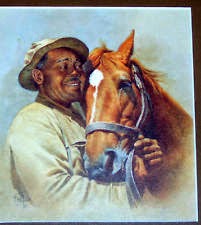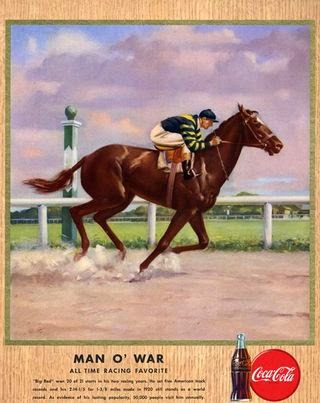.
Business Tech
World’s largest “supervolcano” is even bigger than
previously thought
By The Conversation May 2, 2015
Seismologists have discovered a massive magma reservoir
beneath the Yellowstone supervolcano in Wyoming, US, that suggests its volcanic
system could be more than 5.6 times larger than was previously thought.
Although it was already known that Yellowstone had
one magma reservoir, located about 5-16km (3-10 miles) below the surface, the
new study, published in Science, has revealed another, much larger reservoir
sitting directly below the first, located around 20-50km (12-30 miles) below
the surface.
This reservoir is thought to have a volume of around 46,000
cubic km – compared to a volume of around 10,000 cubic km for the shallow
reservoir.
To make their discovery scientists analysed the vibrations
made by earthquakes that passed beneath the volcano. The technique not only
sheds light on this volcano’s potentially life-threatening eruptions but
it could also help us understand other volcanoes such as Calbaco, which is
currently erupting in Chile.
Sleeping Beauty
Yellowstone volcano is composed of an immense volcanic
crater – known as a caldera – more more than 70km (44 miles) in length, most of
which lies within Yellowstone National Park. The volcano rarely erupts lava (it
last did so about 70,000 years ago, but the magma lying beneath the
surface gives rise to spectacular geothermal features, such as geysers and
colourful hot springs.
The last large eruption at Yellowstone
was 64,000 years ago, and ejected around 1,000 cubic kilometres (240 cubic
miles) of volcanic material. This cataclysm created the Yellowstone
caldera. To get an idea of the scale of this, the largest eruption in recorded
history, Mount Tambora in 1815, erupted about a sixth
of that.
Magma reservoirs are thought to occur beneath most
volcanoes, and play a crucial role in the dynamics of eruptions. However, they
are too deep, and conditions within them too extreme, to be measured directly
so volcanologists have to infer information about them using other means, such
as measuring seismic waves.
These waves travel more slowly when they pass through molten
rock, and accordingly the group were able to use the velocities of the
earthquake waves to infer the presence of a large, deep zone of partially
molten material.
Carbon footprint explained
The magma stored in the deeper reservoir probably doesn’t
cause eruptions at Yellowstone directly.
Instead, it likely acts as a “feeder” for the smaller, shallower reservoir –
which is the ultimate source of the volcano’s catastrophic eruptions.
Scientists had suspected the existence of a second magma
reservoir at Yellowstone for some
time, but this new evidence is among the strongest support of the theory to
date.
The discovery of this second magma reservoir may also help
to explain a mysterious feature of the Yellowstone volcano:
its carbon footprint. Carbon dioxide gas is commonplace at volcanoes (it
is given off by rising magma), but Yellowstone’s
output, which is around 45,000 tonnes of CO2 each day, was too high
to be explained by a single magma reservoir. But according to the study’s
authors, the presence of the new reservoir is enough to account for the
volcano’s CO2 flux.
If the high-resolution seismic imaging technique used in the
study could be repeated at other volcanoes whose deep structure is poorly
understood – such as Calbuco volcano in Chile – volcanologists might
eventually be able to understand how such eruptions take place. The first
stirrings of volcanic eruptions happen far below the surface. If researchers
can emulate the findings at Yellowstone at
other volcanoes, it can only tell us more about the risks they pose.
By Robin Wylie, PhD researcher in Volcanology at UCL
Nine months ago
If This Supervolcano Erupts, Two-Thirds of America Will
Be Screwed
Deep in America’s
northwest, there lies a supervolcano that, if erupted, has the potential to
wipe out the majority of the United States.
What is a
supervolcano exactly?
I
think the name says it all, but officially, scientists define it as a volcano capable of an
eruption thousands of times greater than any ordinary volcanic explosion.
These
supervolcanoes burst when a growing pressure of molten rock, or magma, rises up
from the Earth’s mantle.
When the crust
can’t contain the buildup anymore — boom.
In historic
times, we luckily haven’t experienced a supervolcano explosion. The most recent
eruption occurred 27,000 years ago in New Zealand.
But, mankind
isn’t out of the woods yet. Deep below Yellowstone
National Park in Wyoming lies a supervolcano that is very
much alive.
A
Volcanic Winter
A massive
underground chamber filled with magma sits miles below the surface in America’s
oldest national park.
Though
scientists are mixed as to whether the place could blow anytime soon, there is
one thing they do agree on — if it did, it would push much of Earth to the
verge of extinction.
It’s immediate
effects would be deadly enough, with some estimates saying that 87,000 people would be killed instantly.
A 10-foot layer of ash would spread up to 1,000 miles away,
leaving two-thirds of the country completely uninhabitable.
Once the plume rises high into the stratosphere, the
released sulfuric gases would mix with the Earth’s water vapor, which National
Geographic reports could launch the country and other parts of the globe
into a “volcanic winter.”
Essentially, the United States and much of the
world would be brought to its knees.
But the carnage doesn’t stop there. The spread of volcanic
ash, rocks and gas would immediately cease any sort of air transportation
in much of the world.
Just take into account the traffic shutdown following the
2010 Eyjafjallajökull eruption in Iceland. The relatively small
explosion caused the closure of large swaths of European airspace, as well as a
six-day travel ban in the impacted area.
Those who do survive would be left with a big bill too. Doug
Bausch, a senior scientist at FEMA, told WND that such a scenario would cause an estimated $3
trillion in damage for North America.
Could it Happen In
Your Lifetime?
The last time Yellowstone erupted — roughly 640,000 years
ago — the American continent was devastated, with volcanic materials reaching as far as Louisiana over 1,500 miles away.ast decade, there has been some increased activity
at the site. Since 2004, the supervolcano has been rising and just this month,
roads were closed in Yellowstone after extreme
heat from below was melting the asphalt on roads up above.
An explosion of “volcanic winter” magnitude, however doesn’t
seem likely according the U.S. Geological Survey. They say that the chances
of a large-scale eruption at Yellowstone “are
exceedingly small in the next few thousand years.”
Of course, other scientists (and the conspiracy theorist
inside all of us) are a bit more skeptical. See the thing is, these explosions
are highly unpredictable. I think the Huffington Post said it most accurately.
“The bulging pocket of magma swishing around beneath Old Faithful might never blow its lid again. Or, it might
put on a surprise fireworks show next Independence Day. Scientists just don’t
know.”
I guess it just depends who you want to believe. Personally,
I’d like to go on living without worrying about choking to death on toxic
ash.
.


































